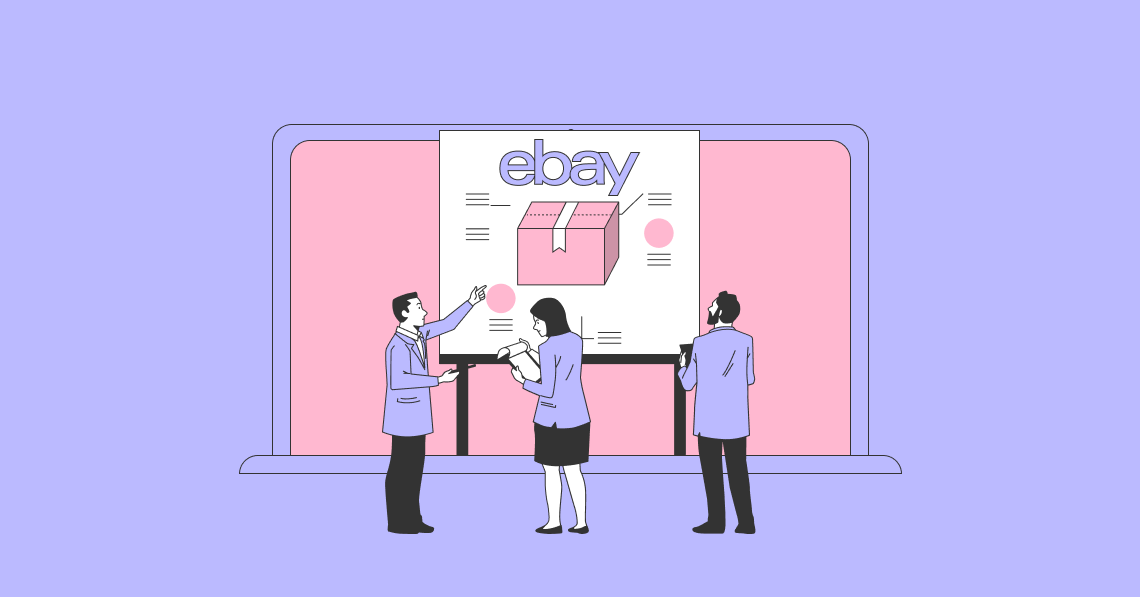Traditional merchandising includes everything you do to promote and sell your products in-store in a retail setting. It includes presenting your products in a visually favorable way, to try and encourage purchases. eCommerce may lack a physical store and potential customers generally don’t get to see the actual items they will end up purchasing, but there are many eCommerce merchandising strategies you can use to encourage people to buy your products online.
However, eCommerce is very different from traditional brick-and-mortar selling, and eCommerce merchandising has had to adapt to meet the very different needs of an online audience. You can’t just take the techniques you use in-store and use them unchanged on the web. For a start, you are likely to have many more online channels than you do offline (unless you operate a chain of stores) and you need to modify your eCommerce strategies for each channel. Unsurprisingly, many brands are now engaging in omnichannel marketing to assist with this.
Adobe has found that 38% of people won’t engage with a website due to an unattractive layout or content. In the case of an eCommerce store, improving the attractiveness of your store is an important part of merchandising.
How to Use eCommerce Merchandising to Improve Your Customer Experience:
Understanding eCommerce Merchandising
At its heart, eCommerce merchandising involves placing your products on an eCommerce website in such a way as to encourage customers to select and purchase your products ahead of those offered by your competitors. However, as we’ve previously said, eCommerce merchandising is about more than how you lay out a webpage. It includes all the steps that a potential customer will go through to make a purchase of products from your eStore, no matter how they encounter it.

At its heart, eCommerce merchandising needs to be about improving the customer experience. The average time somebody spends on an eCommerce website varies from 44 seconds to 1 minute and 22 seconds (depending on your industry). A clothes eCommerce store has an average time-on-page of around 45 seconds, whereas the average visit time at a B2B website is over 80 seconds. On average, the general sweet spot on a page, across all industries, is around 53 seconds. However, you can’t always assume that somebody spending a long time in your eCommerce store is necessarily a good thing. it may simply mean that you have inefficient processes, making purchasing things a chore for your customers.
Effective eCommerce Merchandising Strategies

1. Ensure You Have a Search Tool Optimized for Your eCommerce Store
If you sell goods on big marketplaces, like Amazon or Walmart, you will probably know the importance that these organizations place on their search engines. They understand that efficient search on a website can improve conversion rates and lead to happier shoppers. Marketing guru, Neil Patel, suggests you can improve your customers’ search experience with the following techniques:
Highlight the search bar
This makes it easy for your visitors to find the store.
Filter your results page
If you have a good site search engine, you should be able to customize the look and feel of the results page to ensure it shows what your potential customers want to see. And you can invest in a better search engine than the one that comes by default with your eCommerce site’s core software, like WordPress or Shopify. You will want an intelligent search engine that can take user input and adapt their descriptions into a relevant range of products. Ideally, your customers should be able to filter their search results in multiple ways simultaneously.
Ensure your search engine can handle long-tail semantic searches
Shoppers making in-depth long-tail searches are far more likely to convert than someone making general searches. Patel gives an example, of how someone looking for “women’s long sleeve black tee size M” is far more likely to convert (i.e., buy) than someone who just looks for “women’s tees.”
Use a search engine that includes intelligent autocomplete
Some of the best search engines combine Natural Language Processing (NLP) algorithms with autocomplete to present query results that relatively accurately match a searcher’s intent. Ensure that your site shows logical breadcrumbs, making it easy for your store’s visitors to modify a search easily, without having to start at the beginning.
2. Set up Your Site for Faceted Search
If you’re serious about having a search function in your eCommerce store you should allow Faceted Search. Searchers can modify their searches by tweaking a range of different attributes.
As with many things eCommerce, Amazon provides an excellent example of this. Look at the example below:

You will notice how Amazon allows you to modify your search based on numerous facets by selecting or deselecting different boxes in the left-hand column.
Faceted search splits product features into categories, making it easy for a searcher to refine their searches to only include the features that interest them (and exclude those that don’t).
You need to ensure that your faceted search facilities make it easy for site visitors to make searches that move them toward meeting their purchasing goals.
One of the main advantages of faceted search is that it takes away the need for your visitors to think up relevant search terms. By working their way through the various levels of facets, they can search without having to think through suitable search terms, a problem that many shoppers face.
3. Include Personalization Wherever Possible
Online consumers have now been conditioned to expect personalization when they enter an eCommerce environment. Although there is a fine balance between personalization and appearing “creepy” by following someone around the internet, most people prefer to feel that an online retailer makes the effort to customize their offers and interfaces, rather than being generic and looking the same for everybody.
You should enable personalization at every stage of your customer journey, recognizing each customer’s tastes and preferences based on their previous interactions with your site. And if you engage in social commerce, your personalization may cover a wide range of channels, not just your eCommerce store, all interrelating.
You can provide personalization with faceted search to make it even easier for visitors to your eCommerce store. For example, whenever somebody comes to your site, your search engine can remember the selections they opted for on their last visit, placing them near the top of the options for each facet.
Alongside this, you can incorporate past viewed products and suggestions based on your previous searches. You could also recommend complementary products that could go with whatever the consumer bought previously.
Leveraging Data and Analytics for Merchandising Optimization
One advantage that eCommerce has over traditional selling is that you can easily access a plethora of data and analytics. You can use this data to improve your eCommerce merchandising activities. You should be able to access sufficient data to analyze the behavior of your target customers. What are their shopping patterns? Where do they spend their time online? Which channels should you focus on to attract the “right” consumers?
And once these people arrive at your store, you can analyze their onsite behavior. What terms do they most commonly search for? How do they typically navigate around your site? Which products should you highlight at particular times of the year? And, of course, it is thanks to data and analytics that you will be able to personalize your offers to specific people.
Even if you can’t fully personalize your customers’ experience, you can use segmentation as a partial means to improve your customers’ experience. You can utilize data relating to demographics, geography, languages, visit history, devices, and transactional data (e.g., the way a customer usually pays) to adjust any visitor’s site experience. You can do things as simple as ensuring that your site shows in a customer’s preferred language, uses their local currency, and highlights the types of products they’ve searched for and purchased in the past.
Mobile Optimization for eCommerce Merchandising
Nothing puts a potential customer off more than if they can’t navigate your eCommerce store. You can’t assume that all your customers have the same technology and interact with your store in the same way. According to the Digital 2023 April Global Statshot Report, 57% of daily internet use now is on mobile devices and 43% on computers. You need to ensure that your eCommerce store is just as easy to use by mobile users as it is by desktop users and vice versa. Some people will be interacting with your store using a mouse and keyboard, others with a touch screen, and an increasing number by voice alone. Nearly 20% (19.3%) of internet users aged 16 to 64 use voice assistants to find information each week.

You might be tempted to rely on icons for your menus, as mobile has so little screen real estate. However, if you sell multiple items across many categories, you might need to have in-depth menu systems that adapt depending on your device.
The Future of eCommerce Merchandising
Nowadays eCommerce is becoming more omnichannel. People don’t just come to your website, take notice of your on-site advertising, make a purchase, and leave. Customers find your store in multiple ways, sometimes even purchasing without ever seeing your website, for example via social commerce.
As we move forward, consumers expect a personalized experience, and you will have to adapt your merchandising to account for this. If you can’t meet a consumer’s needs promptly, they will happily move on to the next eCommerce store.
AI is rapidly becoming a force in eCommerce. This is following through to merchandising as well. As we saw, 51% of eCommerce companies are already employing AI to provide their audience with a smooth user experience. 40% of the leading eCommerce companies now use AI to improve customer experience. They also utilize AI to collect data relating to how people use your website, so you can better understand what they are actually looking for. That way you can tweak things to improve the customer experience.
We’ve referred several times in this article to personalization and the expansion of omnichannel marketing. And this directly affects eCommerce merchandising. The modern consumer spreads their time across a wide range of online channels. And nothing irks them more than seeing the same marketing messages wherever they go. They might have an interest in your product, but they aren’t going to rush to your eCommerce store if they have been subjected to an identical mass media-type ad on Facebook, Twitter, their favorite news site, YouTube, and as an unsolicited email. Instead, you want your messages to each consumer to flow in some logical sequence, even when they change apps, platforms, and devices.
We are also seeing something of a convergence between eCommerce and traditional brick-and-mortar selling. Many physical shoppers now go online to check the stock status at the stores they intend to visit. They are likely to research items online, compare different stock items, and do comparative price checks. It’s also common nowadays for people to make a purchase online and then choose to go in-store to collect it, rather than wait for a scheduled delivery. As such, there is often an overlap between eCommerce merchandising and what you do in your physical stores.
Wrapping Things Up
eCommerce merchandising includes everything you do to create a branded journey for your online customers. You aim to create the best shopping experience for your customers, ensuring that they want to return for repeat purchases.
At its simplest level, eCommerce merchandising can be merely how you organize and display your products in your eCommerce store, i.e., the online equivalent to the way you lay out the shelves in your physical store.
But it is really much more than merely the way you list your stock online. It encompasses your eCommerce store’s entire brand identity, down to your logo, site colors, and general visual style. Ideally, you want your regular customers to recognize your site, even if they arrive there accidentally and don’t look at the URL. eCommerce merchandising sets the UI/UX experience of your store’s visitors.
At the very least you should incorporate segmentation into your eCommerce store, ensuring that it appears relevant to every visitor. It is becoming more common, however, to go deeper into personalization, creating a unique experience for every visitor, that hopefully encourages them to spend their money with you now, and then return for future purchases.


